https://global.udn.com/global_vision/story/8662/3360818?direct
四級颶風「佛羅倫斯」襲來:美國東岸急撤150萬人
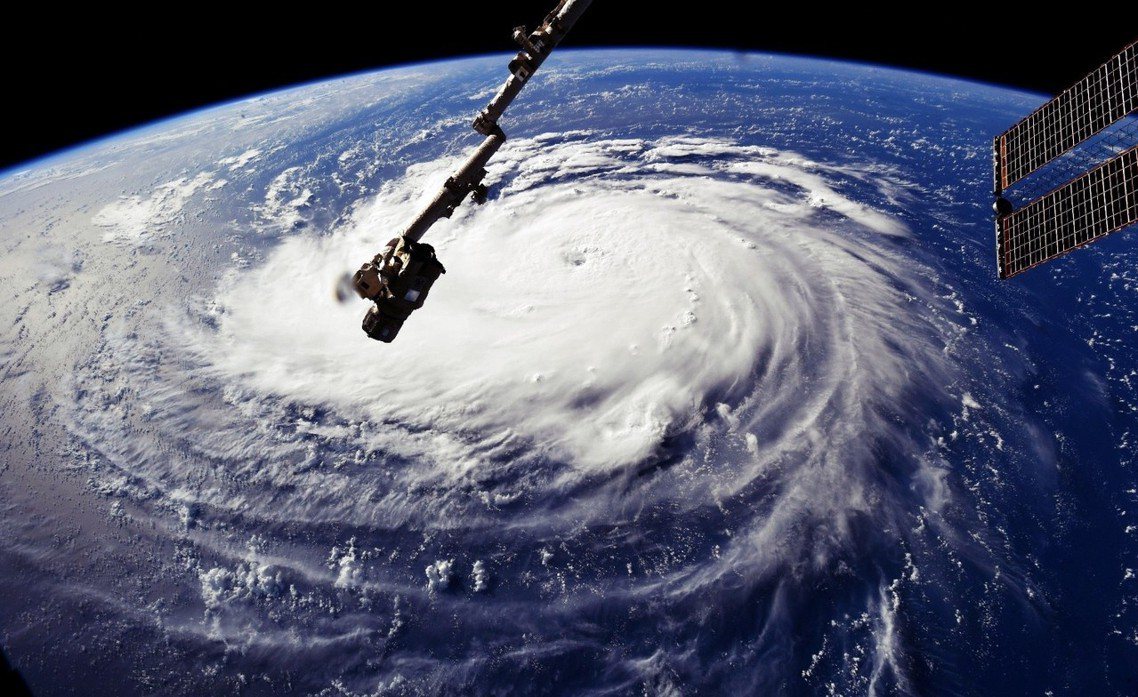
【2018. 9. 11 美國】 四級颶風「佛羅倫斯」襲來:美國東岸急撤150萬人 今天大西洋的第一個四級颶風「佛羅倫斯」(Hurricane Florence),即將侵襲美國東岸的卡羅萊納海岸,預計48小時內颶風就會在北卡羅萊納州登陸,影響範圍內的北卡羅萊納州、南卡羅萊納州與維吉尼亞州,目前都已對沿海地區、超過150萬的居民,頒布強制性的緊急撤離令。當局強調,佛羅倫斯不僅是南北卡州近30年來所遭遇的「最強颶風」,暴風威力還不斷增強中、隨時都將升級成最頂級的「五級颶風」。 美國國家颶風中心(NHC)表示,大西洋颶風佛羅倫斯在周一清晨升級成三級颶風後(風力已等於「強烈颱風」),24小時內再度升級,並成為今年大西洋的第一個「四級颶風」。佛羅倫斯目前離美國東部海岸還有1,000公里,最大持續風速則達每小時140英里(220 km/hr),朝北北西方向,預計48小時內就將在南卡州與北卡州之間的海岸登陸。 由於今年夏季,大西洋海域異常高溫,海面上的水氣充沛、溫度足夠,因此佛羅倫斯的暴風威力,很可能在周二清晨提升到155英里/小時的規模,甚至極有機會再度升級,成為今年的第一個大西洋「五級颶風」(等同於美軍在太平洋定義的「超級颱風」)。 NHC估計,威力巨大的佛羅倫斯,預計會在美東時間13日下午,於北卡羅萊納州沿海登陸,並轉北影響維吉尼亞州。然而氣象單位擔心,登陸後的佛羅倫斯很可能會滯留於北卡與維州之間,並帶來「歷史性的氣流雨量」,對美東帶來慘重災情。 《路透社》表示,佛羅倫斯的強大威力,對於卡羅萊納海岸已是相當罕見;但氣象專家們更擔心的,卻是佛羅倫斯重演去年「颶風哈維」(Hurricane Harvey)緩慢移動、水淹休士頓的慘劇,因此各州的防災與疏散才都會嚴陣以待。 報導指出,四級颶風佛羅倫斯若是往卡羅萊納海岸登陸,那也將是自1989年的「五級颶風雨果」(Hurricane Hugo,當年造成60死、95億美金損失)之後,兩卡與維吉尼亞所遭遇的最強颶風。 「颶風佛羅倫斯極為危險...而北卡羅萊納州正好位於他的侵襲靶心!」北卡州長庫珀(Roy Cooper,民主黨)表示,為了避免災情,北卡已緊急撤離沿海100萬居民——若再加上南卡與維州,美東地區總共有150萬人收到強制撤離的官方命令。 目前,北卡羅萊納沿海已出現了物資搶購與撤離車潮;而在北邊的維吉尼亞州,美國海軍也下令停靠於軍事重鎮——諾福克軍港——的30艘戰艦緊急出海,以避免在大風大浪之下,戰艦會撞壞軍港設備。 「請所有居民不要輕忽颶風的威脅。」維吉尼亞州的救災中心主任史騰(Jeffrey Stern)呼籲,「襲來的颶風佛羅倫斯,或將是所有維吉尼亞居民,畢生都不曾經歷過的重大天災災難。」 |

========
https://www.nytimes.com/interactive/2016/10/12/us/record-flooding-north-carolina-hurricane-matthew.html
Record Flooding in North Carolina
Continues Days After Hurricane Matthew
Days after Hurricane Matthew became a post-tropical cyclone and pulled far from North Carolina, flooding continues to threaten cities along swollen rivers well upstream from the coast. Flood levels in some areas have surpassed records set after Hurricane Floyd in 1999.
Raleigh
N.C.
S.C.
North
Carolina
South
Carolina
Area of
detail
Goldsboro
Lumberton
Kinston
Nichols
Myrtle Beach
Charleston
Atlantic
Ocean
Blue areas are an initial
estimate of flooding
50 miles
Source: Dartmouth Flood Observatory
Gov. Pat McCrory of North Carolina warned that flooding caused by inland rainfall from the storm is expected to continue through this week. The National Weather Service has predicted major flooding along the Neuse, Tar, Lumber and Cape Fear Rivers, along with many other rivers and creeks.
 Chris Keane/Reuters
Some parts of the coast had 18 inches of rain over the past seven days. Heavy rain also fell far inland, creating the runoff that is now causing rivers to crest. More than two dozen people in five states died as a result of the storm, 19 of them in North Carolina.
Estimated rainfall in past 7 days
Virginia
North
Carolina
Raleigh
Goldsboro
Kinston
Charlotte
Lumberton
Nichols
South
Carolina
Myrtle Beach
Charleston
Atlantic
Ocean
Georgia
Savannah
100 miles
Source: National Weather Service
“In some of the places, it’s going to be above major flood stage for days,” said Jeanne Robbins, supervisory hydrologist at the United States Geological Survey, referring to a level of flooding that is extensive and possibly life-threatening.
“It’s going to take a number of days to come down,” Ms. Robbins said.
Lumberton
Estimated
flooding
Lumber
River
1 mile
Aerial photographs show large sections of Lumberton, a town of about 22,000, flooded. The Lumber River rose two feet higher than its previous record level. Hundreds of residents fled.
Chris Keane/Reuters
Some parts of the coast had 18 inches of rain over the past seven days. Heavy rain also fell far inland, creating the runoff that is now causing rivers to crest. More than two dozen people in five states died as a result of the storm, 19 of them in North Carolina.
Estimated rainfall in past 7 days
Virginia
North
Carolina
Raleigh
Goldsboro
Kinston
Charlotte
Lumberton
Nichols
South
Carolina
Myrtle Beach
Charleston
Atlantic
Ocean
Georgia
Savannah
100 miles
Source: National Weather Service
“In some of the places, it’s going to be above major flood stage for days,” said Jeanne Robbins, supervisory hydrologist at the United States Geological Survey, referring to a level of flooding that is extensive and possibly life-threatening.
“It’s going to take a number of days to come down,” Ms. Robbins said.
Lumberton
Estimated
flooding
Lumber
River
1 mile
Aerial photographs show large sections of Lumberton, a town of about 22,000, flooded. The Lumber River rose two feet higher than its previous record level. Hundreds of residents fled.
 Chuck Burton/Associated Press
Chuck Burton/Associated Press
 Sean Rayford/Getty Images
Goldsboro
River
Neuse
Estimated
flooding
1 mile
The Neuse River near Goldsboro reached 29 feet, surpassing the peak after Hurricane Floyd. Downstream from Goldsboro, the water is expected to continue rising.
Sean Rayford/Getty Images
Goldsboro
River
Neuse
Estimated
flooding
1 mile
The Neuse River near Goldsboro reached 29 feet, surpassing the peak after Hurricane Floyd. Downstream from Goldsboro, the water is expected to continue rising.
 Casey Mozingo/The Goldsboro News-Argus, via Associated Press
Casey Mozingo/The Goldsboro News-Argus, via Associated Press
Days after Hurricane Matthew became a post-tropical cyclone and pulled far from North Carolina, flooding continues to threaten cities along swollen rivers well upstream from the coast. Flood levels in some areas have surpassed records set after Hurricane Floyd in 1999.
Raleigh
N.C.
S.C.
North
Carolina
South
Carolina
Area of
detail
Goldsboro
Lumberton
Kinston
Nichols
Myrtle Beach
Charleston
Atlantic
Ocean
Blue areas are an initial
estimate of flooding
50 miles
Source: Dartmouth Flood Observatory
Gov. Pat McCrory of North Carolina warned that flooding caused by inland rainfall from the storm is expected to continue through this week. The National Weather Service has predicted major flooding along the Neuse, Tar, Lumber and Cape Fear Rivers, along with many other rivers and creeks.

Chris Keane/Reuters
Some parts of the coast had 18 inches of rain over the past seven days. Heavy rain also fell far inland, creating the runoff that is now causing rivers to crest. More than two dozen people in five states died as a result of the storm, 19 of them in North Carolina.
Estimated rainfall in past 7 days
Virginia
North
Carolina
Raleigh
Goldsboro
Kinston
Charlotte
Lumberton
Nichols
South
Carolina
Myrtle Beach
Charleston
Atlantic
Ocean
Georgia
Savannah
100 miles
Source: National Weather Service
“In some of the places, it’s going to be above major flood stage for days,” said Jeanne Robbins, supervisory hydrologist at the United States Geological Survey, referring to a level of flooding that is extensive and possibly life-threatening.
“It’s going to take a number of days to come down,” Ms. Robbins said.
Lumberton
Estimated
flooding
Lumber
River
1 mile
Aerial photographs show large sections of Lumberton, a town of about 22,000, flooded. The Lumber River rose two feet higher than its previous record level. Hundreds of residents fled.

Chuck Burton/Associated Press

Sean Rayford/Getty Images
Goldsboro
River
Neuse
Estimated
flooding
1 mile
The Neuse River near Goldsboro reached 29 feet, surpassing the peak after Hurricane Floyd. Downstream from Goldsboro, the water is expected to continue rising.

Casey Mozingo/The Goldsboro News-Argus, via Associated Press
==========
Hurricane Florence: More than one million people evacuate as monster storm nears US
More than one million people have fled toward higher ground in a mass evacuation ordered three days before the expected arrival of Hurricane Florence.
With maximum sustained winds of 220 km/h, Florence was due to grow even stronger before making landfall on Thursday, mostly likely in southeastern North Carolina near the South Carolina border, the National Hurricane Center in Miami said.
Authorities also warned of the potential for Florence to unleash prolonged torrential rains and widespread flooding across several states.

"Florence is expected to be an extremely dangerous major hurricane through Thursday," the NHC said.
NHC Director Ken Graham also warned of "staggering" amounts of rainfall that may extend hundreds of miles inland and cause flash flooding.
Forecasts call for between 25 and 38 cm of rain in the hardest-hit areas, possibly more if the storm stalls over land, as expected, Mr Graham said.
Virginia's emergency operations chief, Jeffrey Stern, told reporters that residents should brace for "something that no one in Virginia has experienced in their lifetimes."

North Carolina Governor Roy Cooper told a news conference his state was in "the bull's eye."
Mr Cooper and his counterparts in South Carolina, Virginia and Maryland all declared states of emergency.
Jittery residents in the Carolinas have begun the rituals of disaster preparation - boarding up windows and stocking up on groceries, water and petrol.
South Carolina Governor Henry McMaster has ordered an estimated one million coastal residents in his state to move inland.

Mandatory evacuation orders also were issued for more than 300,000 people in North Carolina and Virginia.
US President Donald Trump has canceled a political rally planned for Friday in Jackson, Mississippi, over safety concerns related to Florence, his campaign said.
Mr Trump said in a Twitter message he has spoken to the governors of North and South Carolina and Virginia, adding: "Federal government stands by, ready to assist."
In Holden Beach, North Carolina, in the storm's path, longtime residents were busy preparing.

A local BP service station ran out of petrol for about two hours on Monday as motorists rushed to fill up their tanks.
"People are getting frantic," assistant manager Nadine Schrock said, adding her shop also sold out of cases of bottled water.
The US military said it was sending an advance team to Raleigh, North Carolina, to coordinate with state and local authorities.
It said about 750 military personnel would be designated to provide support.

The US Navy said it was sending nearly 30 ships from coastal Virginia out of port to ride out the storm.
Hurricane Florence could inflict the hardest hurricane punch the Carolinas have seen in more than 60 years.
North Carolina has been hit by only one other Category 4 storm since reliable record keeping began in the 1850s. That was Hurricane Hazel in 1954.
In comparison, Florida, which is closer to the equator and in line with the part of the Atlantic where hurricanes are born, off the African coast, has had at least five hurricanes in the past century of Category 4 or greater, including Hurricane Andrew in 1992.

Hazel's winds were clocked at 240km/h at the North Carolina coast and kept roaring inland.
They were only slightly diminished by the time the storm reached Raleigh, 241km inland.
The storm destroyed an estimated 15,000 buildings and killed 19 people in North Carolina.
— AAP and AP.
© Nine Digital Pty Ltd 2018






















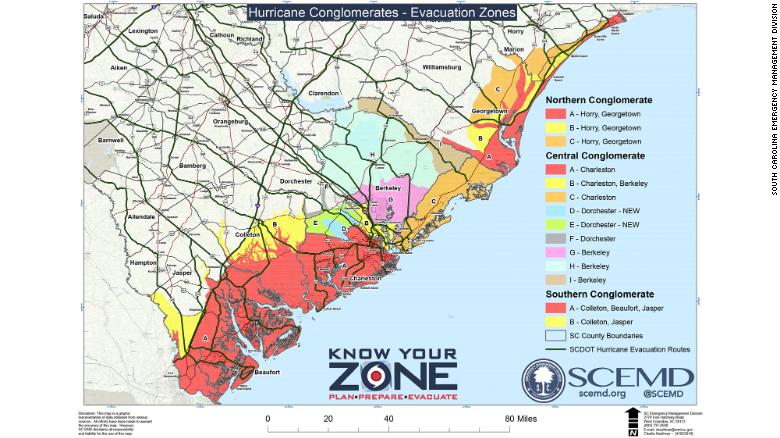
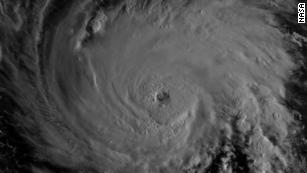

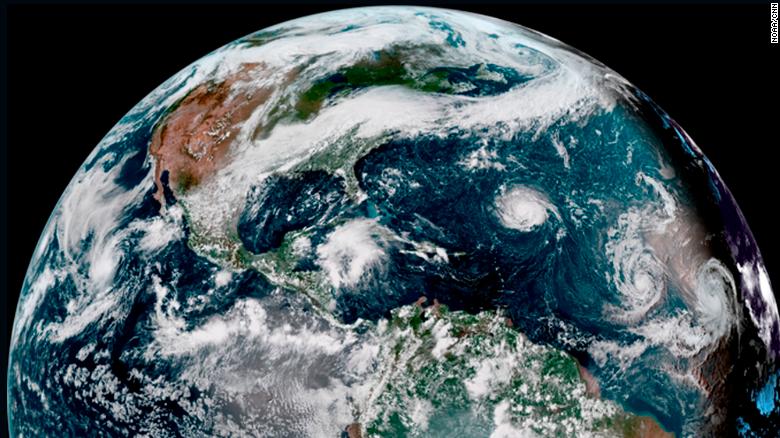
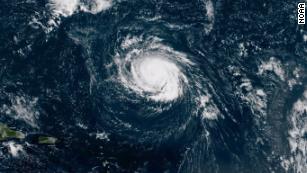
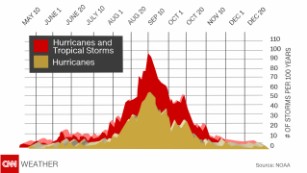
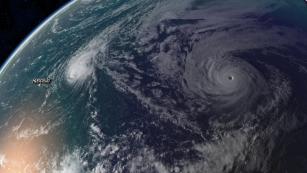
No comments:
Post a Comment